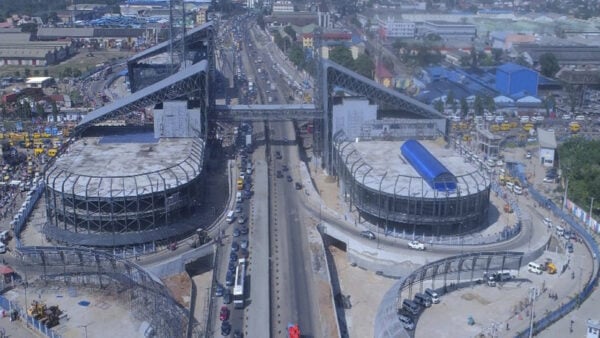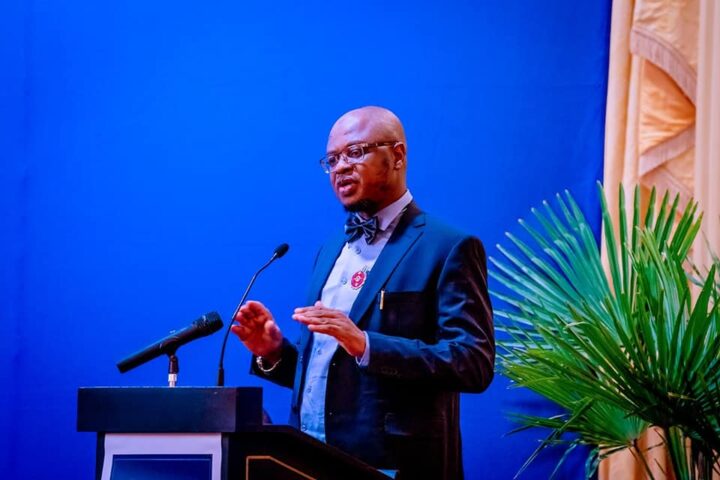BY GBENGA ONABANJO
The Oshodi megabus interchange terminal is arguably the biggest bus terminal in the whole of West Africa, and it is equally the most audacious. Put in proper context, Oshodi is at the intersection of the Apapa-Oshodi expressway and Agege motor road. It is a conurbation of about 15 motor parks with an attendant record of over 5000 buses of various shapes and sizes trooping in on a daily basis. Over one million people go through Oshodi each day in an environment that is chaotic with high energy and mass markets, and a sea of heads streaming across the landscape like swarming locusts.
The site location aptly describes the huge potential and the ready market for the siting of an organised and modern bus interchange, notwithstanding the chaos. After all, according to a famous writer, it is only that uniquely Japanese ability to manage chaos into order, for example, that makes Tokyo so different from many poorer Asian cities with similar basic structures.
We waited with bated breath for this chaos to be turned to order; for the tiger to be tamed and domesticated. Somehow, Governor Babatunde Fashola tamed the tiger during his regime. He brought calm and serenity to Oshodi. He even gifted them with the most celebrated children’s recreational park in Nigeria.
Advertisement
This project was not going to be easy because of the various factors that would come into play—social, economic and environmental. As it is common with politicians, they love cranes and will do all they can within their term in office to erect landmarks and build legacy structures.
That set the tone for Governor Akinwunmi Ambode to build an inclusive, ethnic and diverse structure of megabus terminal for the citizens of Lagos at Oshodi and those passing through. The proximity of the location to the international airport offers a tremendous opportunity to use it as a transit for tourists and international travellers to move to the airport and to other parts of Lagos.
Within his first and only term in office, Ambode was able to deliver a megabus station that is contemporary, audacious, bespoke, but not relatable to the chaos and busyness of the neighbourhood. The intricate but sturdy steelworks find expression with the rustic nature of the environment, but the glass and aluminium stand out like a sore thumb, akin to putting new wine in an old wineskin. The attempt at cooling the entire structure may have been misplaced, as the big open spaces can afford to attract nature to allow natural air to flow by convection.
Advertisement
It is quite obvious that as imposing as this structure is, the design and the execution needed more time to resolve the very fine details, which are usually what give life and soul to a project. The choice and texture of the deployed materials, particularly on the floor and wall surfaces, do not lend the station to easy maintenance. Perhaps a greater sense of adventurism could have been displayed by using bright and pastel colours to throw more life into an otherwise dreary and rustic environment.
The structure in its current state is a good foundation that can be tweaked around to make it more efficient, functional and socially inclusive. Numerous spaces abound that beg for maximum utilisation.
Similar projects in London at Kings Cross and also in Johannesburg at Brickfields offered an opportunity for urban theorists, sociologists, town planners, architects and transformational innovators to push forth their ideas and vision to harness the peculiarities of the neighbourhoods into a fit-for-purpose and a fit-for-the-environment scheme.
More deliberate studies and interventions are therefore needed to make the Oshodi interchange functional, inclusive and to cater to the diverse needs of the teeming stakeholders.
Advertisement
To be continued…
Onabanjo is a Lagos-based architect, environmentalist, public commentator and the chief responsibility officer at Go-Forte Foundation.
Views expressed by contributors are strictly personal and not of TheCable.
Add a comment






